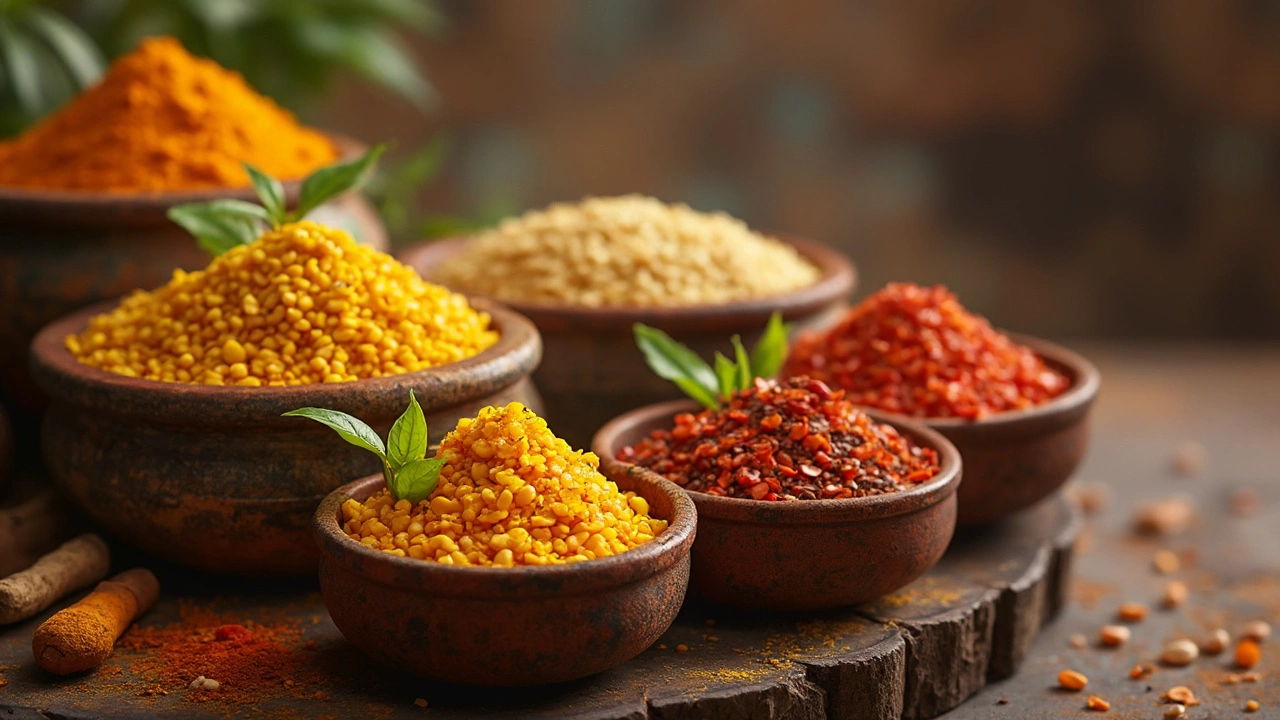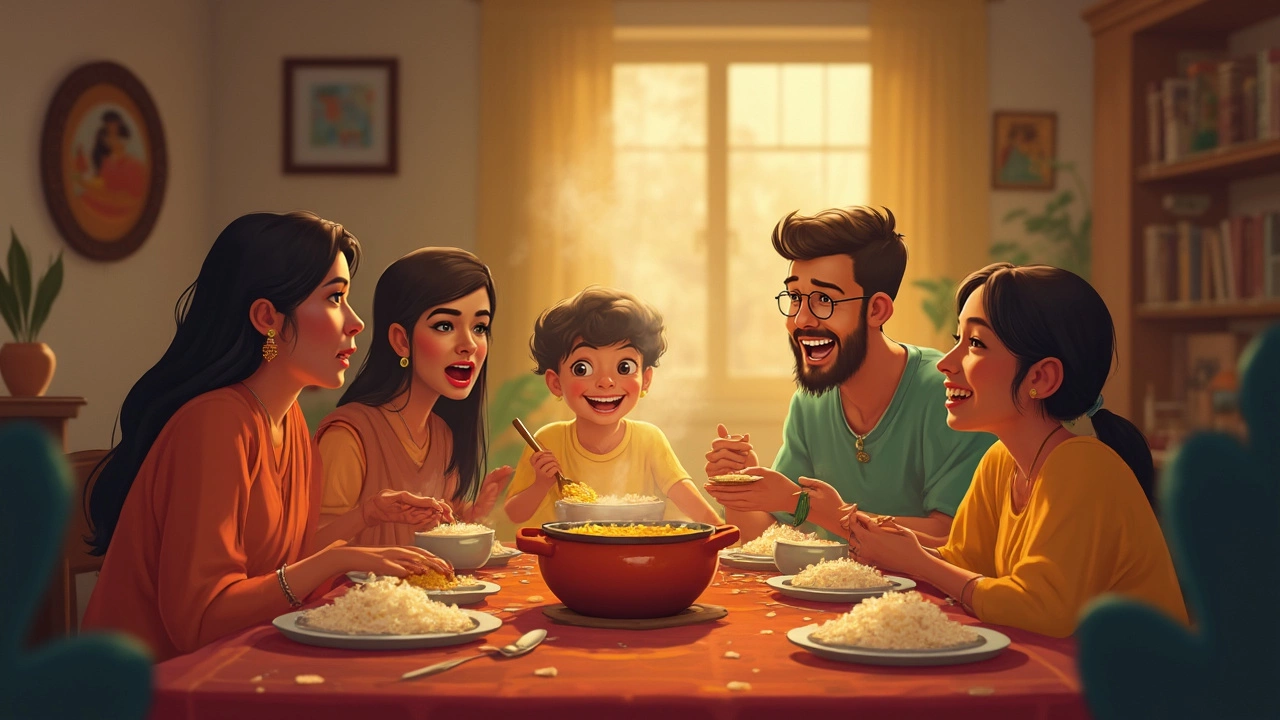Is Dal Healthy or Junk Food?

Dal might just be a bowl of comfort for many, but have you ever thought about what’s actually in it? Is it loaded with nutrients or is it just filling your tummy with empty calories? Well, let’s break it down. Most of us know dal as those cozy lentil or bean dishes, but it's not just about taste—these little legumes pack a nutritional punch too! Rich in protein, fiber, and essential vitamins, dal can be a pretty awesome addition to your regular diet.
Now, if you're worrying about dal being unhealthy, maybe because it’s occasionally stirred up with loads of butter or heavy cream, remember it’s not the star ingredient's fault. It’s all about how you prepare it. When cooked simply with spices and herbs, dal remains far from the junk food category. It's more on the team of healthy eats, offering benefits like improved digestion and steady energy levels.
What is Dal?
So, what exactly is dal? Think of it as the heart and soul of many South Asian kitchens. It's essentially split pulses—like lentils, peas, and beans—that are cooked into a stew or soup. Not just a dish, dal is a staple food that’s been around for centuries, forming a core part of Indian and Pakistani cuisine.
You’ll typically find a variety of dals, each offering a unique flavor and texture. From the mild and soft toor dal to the more robust black urad dal, there's a dal for every palate. But it's not just about variety; it's about versatility too. You can spice it up, keep it plain with herbs, or even mix it with veggies for a balanced meal.
Now, here's an interesting tidbit: India is one of the largest producers of pulses, churning out millions of tons each year. That’s huge! And while dal is most popular in South Asian regions, it’s making its way into Western kitchens too, thanks to its nutrition superpowers.
- Toor Dal (Pigeon Pea): Common in Indian households for its soft, creamy texture.
- Chana Dal (Bengal Gram): Works well in both savory and sweet dishes.
- Moong Dal (Green Gram): Light and easy to digest, perfect for soups and salads.
- Masoor Dal (Red Lentils): Quick to cook, with a slightly sweet taste.
In terms of numbers, including dal in your diet can provide loads of nutritional value. It's rich in protein, making it great for vegetarians. Plus, it comes with a good dose of iron, folate, and fiber, helping you feel full and energized. Whether you’re spooning it over some rice or slurping it as a soup, dal is a wholesome choice that’s far from your typical junk food.
Nutritional Benefits of Dal
So, what makes dal a super addition to your diet? First off, it’s loaded with plant-based protein, making it a go-to choice for vegetarians and anyone looking to cut down on meat. A serving of dal can provide a decent amount of protein without adding too much fat.
But it doesn’t stop there. Dal is also rich in dietary fiber. This fiber helps keep your digestive system running smoothly—think about it like your digestion’s best buddy. If you're aiming for that balanced diet, fiber is a must. And don't forget the vitamins and minerals. Dal brings folate, iron, and magnesium to the table, which are essential for a healthy body.
According to the USDA, a cup of cooked lentils provides around 18 grams of protein and 16 grams of fiber. That's almost half of your daily fiber needs taken care of, just in one bowl!
Let’s talk about why dal isn’t just healthy—it’s smart on the nutrition front. The thing is, the different types of dal (like chickpeas, lentils, or split peas) bring their own special traits too. For instance, chickpeas are great for boosting your iron levels, while lentils are lighter and perfect for a low-calorie meal.
| Type of Dal | Key Nutrient | Health Benefit |
|---|---|---|
| Lentils | Fiber | Good for digestion |
| Chickpeas | Iron | Benefits blood health |
| Split Peas | Folate | Supports heart health |
Another perk worth mentioning: dal is a slow-digesting food. That means it won't spike your blood sugar, making it fantastic for diabetics or anyone trying to keep their energy levels stable throughout the day. So, when you're thinking about keeping your meals nutritious, dal really ticks all the boxes.

Is Dal Considered Junk Food?
So, the big question—could dal actually be junk food? It might be easier to answer if we first understand what junk food actually means. Usually, junk foods are high in calories but low in essential nutrients. They're the kind of stuff you eat that might make you feel full but doesn't give your body much to work with in terms of vitamins and minerals.
In that light, calling dal junk food doesn't really stick. Dal, when cooked right, is rich in protein, fiber, and several vitamins like folate and iron. It's like a power-packed little meal that brings a lot more to the table than something like a bag of chips or a sugary soda. These nutrients help with muscle-building, digestion, and keeping your energy steady through the day.
But hey, there's a catch. A big bowl of dal swimming in ghee or lots of cream isn’t the healthiest choice, obviously. This is where preparation matters. Keeping dal simple, with just the right amount of spices and maybe a tad of healthy fats, keeps it on the “good for you” list.
If you need some numbers, a cup of boiled lentils contains around 230 calories, 15 grams of dietary fiber, 17 grams of protein, and less than 1 gram of fat. Compare that to most junk foods, which pack loads of added sugars, unhealthy fats, and minimal nutritional goodness.
So, in most cases, dal isn't just not junk; it's a great option for a healthy diet. So feel free to enjoy your dal with all its health benefits, as long as you're mindful of how you prepare it. It's a staple that’s not just tasty but also actually good for you!
Simple Dal Recipe
Ready to make some delicious dal? This simple dal recipe is both nutritious and easy to whip up in your kitchen. You don’t need to be a chef to create this staple dish. So, roll up your sleeves and let's get started.
Here's what you’ll need:
- 1 cup of split red lentils (masoor dal)
- 3 cups of water
- 1 small onion, chopped
- 1 tomato, chopped
- 2 cloves of garlic, minced
- 1 inch ginger, grated
- 1 tablespoon of oil or ghee
- 1 teaspoon cumin seeds
- 1/2 teaspoon turmeric powder
- 1 teaspoon salt (or to taste)
- Coriander leaves for garnish
Steps to make the dal:
- Rinse the lentils under cold water until the water runs clear. This gets rid of excess starch and any dirt.
- In a pot, combine the rinsed lentils with 3 cups of water, turmeric, and salt. Bring this mix to a boil, then lower the heat and let it simmer for about 15-20 minutes, until the lentils are soft.
- While the lentils cook, heat oil or ghee in a pan over medium heat. Add the cumin seeds until they start to crackle.
- Toss in the chopped onions and sauté them until golden brown. Add the garlic and ginger, stirring for another minute.
- Add the chopped tomatoes to the mix and cook until they're soft and blended with the spices.
- Mix the onion-tomato-spice blend into the cooked lentils. Stir well and let it cook for another 5 minutes to allow the flavors to meld.
- Finish up by garnishing with chopped coriander leaves before serving.
Now you’ve got a tasty, healthy bowl of dal ready to serve! Pair it with rice or fresh naan, and you’ve got a complete meal. If you're watching your diet, this dal is perfect due to its high protein and fiber content. Just make sure to stay light on the fats if you're keeping a close eye on those calories.